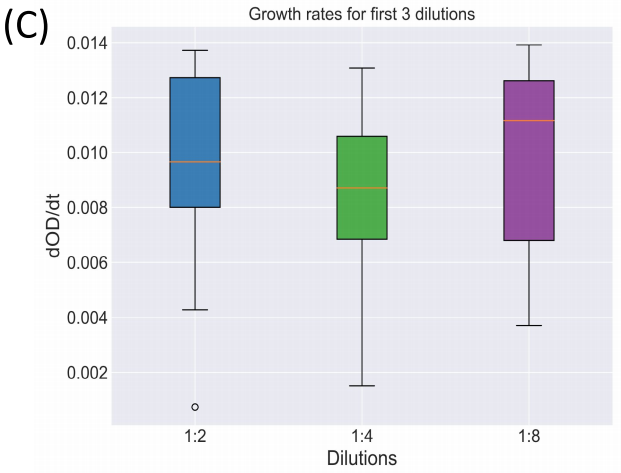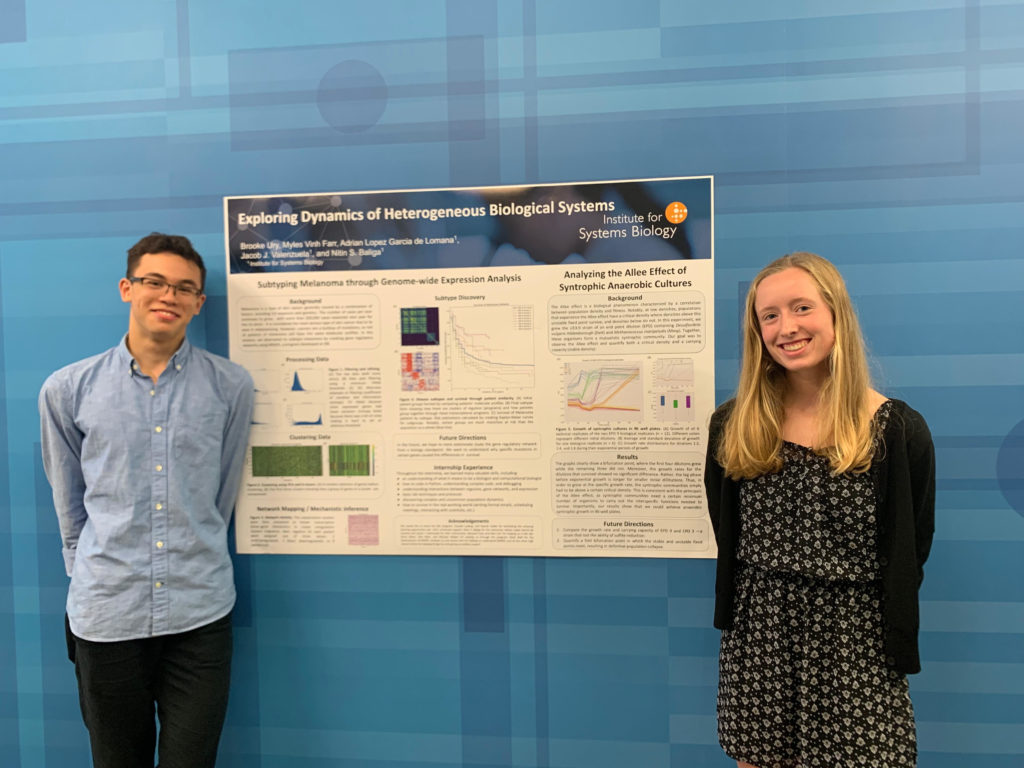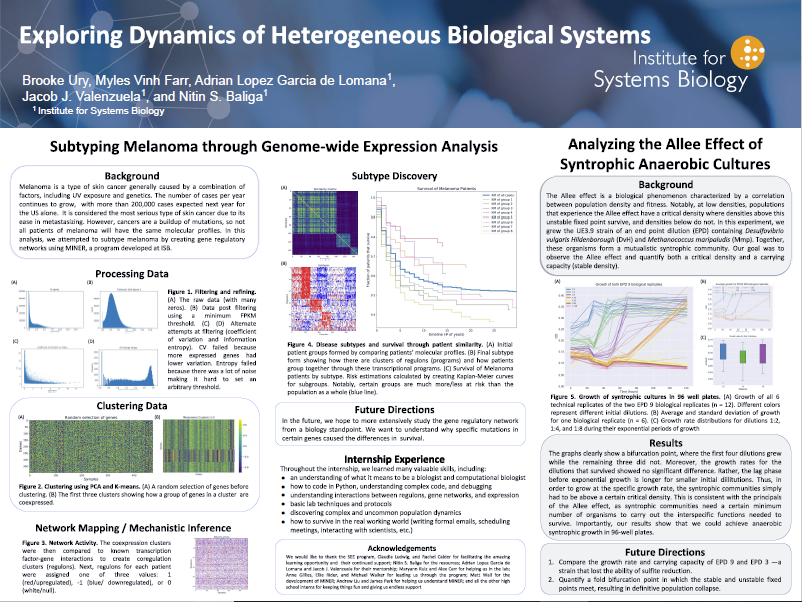Brooke Ury and Myles Vinh Farr
Goal
In this project, our goal was to analyze the Allee effect of syntrophic snaerobic cultures
Background
The Allee effect is a biological phenomenon characterized by a correlation between population density and fitness. Notably, at low densities, populations that experience the Allee effect have a critical density where densities above this unstable fixed point survive, and densities below do not. This point, called a bifurcation, can be modified by various factors, notably the environment. The bifurcation point is extremely important because it conveys the fitness of a species and/or population, thus demonstrating how resilient it is to perturbations and to environmental changes. In this experiment, we were investigating the Allee effect of a syntrophic anaerobic community. We grew a culture of Desulfovibrio vulgaris Hildenborough (DvH) and Methanococcus maripaludis (Mmp) that had been grown in the lab over several years. Of several endpoint dilutions, each behaving mutualistically, but with different genetic profiles, we wanted to observe and compare the Allee effect and quantify both a critical density and a carrying capacity (stable density).
Anaerobic Growth
To investigate this property, we developed a protocol to grow these cultures in sealed 96 well plates, which would allow us to create many more replicates of the cultures efficiently and effectively.

This was one of our early attempts to grow the anaerobic cultures in a 48-well plate. The wells on the right side of the plate are slightly pink because of an indicator in the media that turns pink after contact with oxygen. After this particular trial, we switched back to 96-well plates because the clear seal did not seem to stick as well to the 48-well plate, which was letting in the unwanted oxygen. In the end, however, we were able to effectively grow the anaerobic cultures in the 96-well plate without significant exposure to oxygen.
Measuring Growth of Different Dilutions
After we were able successfully grow the anaerobic cultures in 96-well plates, we investigated the Allee effect of the cultures by subjecting the culture to different initial dilutions and comparing their growth.



(A) Growth of all 6 technical replicates of the two biological replicates (n = 12). Different colors represent different initial dilutions. (B) Average and standard deviation of growth for one biological replicate ( n = 6). (C) Growth rate distributions for dilutions 1:2, 1:4, and 1:8 during their exponential periods of growth.
Results
The graphs clearly show a bifurcation point, where the first four dilutions grew while the remaining three did not. Moreover, the growth rates for the dilutions that survived showed no significant difference. Rather, the lag phase before exponential growth is longer for smaller initial dillitutions. Thus, in order to grow at the specific growth rate, the syntrophic communities simply had to be above a certain critical density. This is consistent with the principals of the Allee effect, as syntrophic communities need a certain minimum number of organisms to carry out the interspecific functions needed to survive. Importantly, our results show that we could achieve anaerobic syntrophic growth in 96-well plates and accurately measure their growth.
Future Directions
In the future we plan to implement a daily dilution which would be representative of an environmental factor. Additionally, we would compare how different endpoint dilutions with different molecular profiles behave differently.


Brooke and Myles with their completed poster